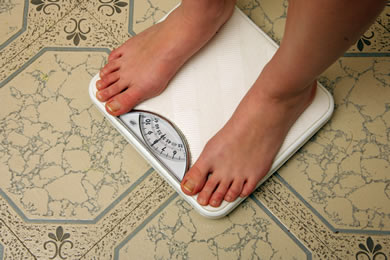Body Shape and Body Image in Adolescence for Nurses



This session explores the normal variations and trends in body shape during adolescence and the factors that commonly influence it, including genetic, ethnic and lifestyle factors. It explains how growth is monitored and explores the common barriers that health professionals may encounter when assessing body shape.
Learning Objectives
By the end of this session you will be able to:
- Describe the normal range of adolescent body shape
- Use age-appropriate growth charts for height, weight and body mass index (BMi)
- Explain the effect of altering the rate of weight gain on BMI
- Recognise genetic, ethnic and pathological influences on body shape
- Identify common activity trends in male and female adolescents and their effect on body shape
- Outline the issues arising from weighing and measuring young people, including common barriers that health professionals may encounter
The high rates of obesity in children and young people, plus widespread concerns about eating disorders in adolescents, have increased the need for weighing and measuring of young people by health professionals. In order to recognise weight problems we need a clear understanding of normal ranges, as well as confidence in the techniques for weighing and measuring young people.
Rachel is a part-time GP and trainer in Redditch, Worcestershire, with particular interests in child obesity, adolescent health and women’s health.
She was appointed Royal College of General Practitioners (RCGP) Clinical Champion for Nutrition for Health in April 2011 and established the RCGP Nutrition Group in 2013.
Rachel contributed to the Academy of Medical Royal Colleges Obesity Steering Group 2013 report:- ‘Measuring up: The medical profession’s prescription to the obesity crisis’.
She contributed to the 2013 Royal College of Physicians ‘Action on Obesity: Comprehensive care for all report’, which looks at how the NHS should adapt to meet the needs of an increasingly obese nation.
Rachel has written two books – ‘Weight Matters for Children’ and ‘Weight Matters for Young People’, Radcliffe Publishing 2006. She has co-authored the obesity modules of the e-Learning for Health Adolescent Health Project and is a member of the RCGP Adolescent Health Group.
She has completed a research project in conjunction with Warwick University, examining the practicalities of offering a child obesity prevention intervention in primary care.
Rachel is married to a GP and we have three boys.

- Anaesthesia | Paediatrics | The Pharmacology of NS...
- Posted By eIntegrity Healthcare e-Learning
- Posted Date: 2024-11-18
- Location:Online
- This session will explore the analgesic effect and toxicity of non-steroidal anti-inflammatory drugs in children.
- Anaesthesia | Paediatrics | Calculations, Correcti...
- Posted By eIntegrity Healthcare e-Learning
- Posted Date: 2024-11-18
- Location:Online
- Part 1 of this session discusses normal body fluid composition and how this changes with age and normal maintenance fluid requirements. It also looks at the diagnosis and correction of fluid deficits. Part 2 of the session looks at the diagnosis and corre
- Anaesthesia | Paediatrics | Calculations, Correcti...
- Posted By eIntegrity Healthcare e-Learning
- Posted Date: 2024-11-18
- Location:Online
- This session deals with diagnosis and correction of common electrolyte abnormalities.
- Anaesthesia | Paediatrics | Monitoring and Titrati...
- Posted By eIntegrity Healthcare e-Learning
- Posted Date: 2024-11-18
- Location:Online
- The aim of this session is to put your theoretical knowledge to practical use, by working through a series of scenarios relating to fluid management in children.
- Anaesthesia | Paediatrics | Anaesthesia for a Chi...
- Posted By eIntegrity Healthcare e-Learning
- Posted Date: 2024-11-18
- Location:Online
- This session will outline the principles of anaesthesia for children with cerebral palsy presenting for elective surgery. It will cover how the severity of cerebral palsy directly affects the techniques chosen







